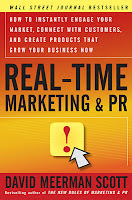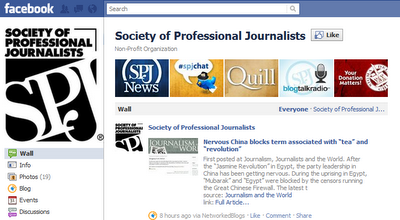 Fortune
Fortune magazine’s recently released 2011 report of the “
World’s Most Admired Companies” named FedEx Corp. as the eighth most admired company in the world. Of the survey’s nine key attributes of reputation, FedEx ranked third in its industry for social responsibility.
As Manager of Social Responsibility at FedEx, Rose Jackson Flenorl directs and implements the company’s community outreach strategy in the areas of disaster relief, safety, education, and environment in national and international markets. She is responsible for building and maintaining relationships with organizations serving African-American, Hispanic, Asian and other diverse audiences.
Flenorl also designs and executes programs that support the FedEx brand globally. She manages relationships with both internal and external stakeholders, acting as the Social Responsibility representative on the company’s internal Corporate Social Responsibility Roundtable, and communicates the company’s community philosophy, objectives and programs to audiences worldwide.
Why is social responsibility vital in the corporate culture of FedEx or any brand?
At FedEx, SR is vital because it speaks to our being employer, neighbor and carrier of choice.
- Employer of choice: Being responsible helps us with team member recruitment and retention. People want to work for a company that is responsible and being a part of a responsible company builds one’s morale and loyalty.
- Neighbor of choice: Being responsible makes FedEx attractive to local communities where we seek license to operate and grow. We want people to have “open arms” when they see us coming. Because FedEx is known as a responsible company, communities are eager to embrace FedEx.
- Carrier of choice: research has shown that a majority of consumers will actually switch brands to one that is perceived as more socially responsible.
It seems like most brands share similar values in their social philosophy. What makes FedEx stand out in the quality of its programs?
Some brands still view social responsibility in terms of check-cutting philanthropy. At FedEx, we focus our philanthropy in ways that leverage our core competencies as a corporation. While we also give financial contributions to NGOs, our focus areas are built around what we are good at:
- Disaster Response: with the world’s largest express transportation network, we are uniquely positioned to expedite life-saving disaster relief materials to where they need to go.
- Safety: with tens of thousands of vehicles on the world’s roadways, safety is in the very heart of our corporate mission statement. We work with Safe Kids Worldwide in ten countries to promote child pedestrian road safety initiatives. The WHO (World Health Organization) is launching a Decade of Action for Road Safety this May. FedEx has been working in this area with Safe Kids for 11 years. We helped Safe Kids China establish the first school zone in that country and we are influencing the creation of safety laws and school curriculums around the world. We’ve reached millions of children and adults with road safety messaging and have made environmental improvements around schools in many cities around the world.
- Education: With our expertise in global trade, we are helping Junior Achievement Worldwide teach young entrepreneurs in more than 50 countries how to expand their business competencies to include international savvy.
- Environment: The EarthSmart Outreach vision is to make communities cleaner, healthier and more efficient by encouraging sustainable transportation, parks and green urban spaces, and resilient ecosystems.
What analytics do you feel are important to measure the success of a social responsibility campaign?
Measurement used to be the holy grail of philanthropy, but we increasingly understand how to demonstrate the impact of our investments. At FedEx, we use a simple framework:
- Social and/or Environmental Impacts - Did the program create realsocial change? Did we provide value to the organization, the communityor the environment?
- Team member engagement - Did team members have a positive servicelearning experience? Did they believe they made an impact?
- Community ownership - Does the initiative make a lasting change in the community? Is there an organization or community that "owns" theprogram?
- Brand & Reputation - Did the investments reflect the how FedExCares? Did the effort reach important community stakeholders?
What ways have social media played an important impact in emphasizing and highlighting your social responsibility efforts? Are there any particular scenarios lately you can reference?
Social media hasn't changed our programs, but it has changed the way we communicate our work and reach new audiences.
At FedEx, we started using social media in 2008 with the launch of our Citizenship Blog. The platform has evolved, but atits core is the opportunity to tell the FedEx story about disasterrelief, safety programs, education efforts, and our work in theenvironment, ranging from electric vehicles to urban conservationefforts.
Our team works closely with our social media team and the various platforms we use, including Facebook, YouTube, and Twitter, to share our story. We have our @FedExCares and @FedEx handles that regularly share updates with followers about our programs. We have dedicated pages on Facebook related to the Community and EarthSmart. Many of the videos we have produced on our programs are on the YouTube channel.
What key strategies do you feel are important to implement in your disaster relief efforts? Can you tell me more about some examples in FedEx’s case?
- Strong, consistent relationships with global disaster relief agencies. We are in weekly if not daily contact with leaders at Red Cross, Salvation Army, Heart to Heart International and Direct Relief International.
- Proactive outreach to global NGOs (non-governmental organizations) when disasters strike. At first notice of any large natural disaster we immediately reach out to our global NGO contacts to offer assistance.
- Close ties operationally.Our team members at our ramp locations near our NGO contact relief warehouses around the country are on a first name basis with our local NGO contacts. The NGOs know how to prepare shipments correctly including paperwork, packaging, etc.
- Participation on first class leadership councils to stay on top of developments in the field. FedEx representatives serve on the Red Cross Corporate Advisory Council and the US Chamber’s Business Civic Leadership Center Disaster Response Working Group. We also have close connections with the International Federation of Red Cross and Red Crescent Societies, the American Association of Corporate Contributions Professionals, InterAction, NVOAD and other relief organizations.
What approach do you recommend for building future partnerships with other brands and nonprofits for collaborating on programs?
- Be sure you have the manpower bandwidth and financial resources to make the program effective and sustainable.
- Look for companies and NGOs that are similar in scope (local, national, global).
- May want to avoid “also ran” programs where your company winds up on a long list of contributors, look to develop something innovative and impactful.
- Make sure other brand(s) are reputable and have similar approach to CSR.
- Make sure charity checks out (990, percentage admin/pr, etc.)
- Seek to support programs that leverage corporate core competencies in a way that complements other corporate core.
Of the responsibility programs that effect local communities that FedEx is involved with, which is your favorite and why?
The local community programs that have the greatest impact and leverage our core competencies are my favorites.
- I am proud when I see our planes land in disaster-stricken regions, bringing relief supplies to those in need.
- I am honored when FedEx is recognized as a best place to work for diverse groups and seen as a model for other corporations.
- I am uplifted when I know our drivers and community partners at Safe Kids are working hard to make streets safe for child pedestrians.
- I am hopeful when I speak to students in classrooms around the world and am inspired by their efforts to overcome the odds and get an excellent education.
- I am connected when I see our people and our communities consider the valuable ecosystems around them and invest to make our world more sustainable.
Same question of international programs?
Safe Kids Worldwide and FedEx created Safe Kids Walk This Way to teach safe behaviors to motorists and child pedestrians and create safer, more walkable communities. The goal is to prevent pedestrian-related injuries to children. Safe Kids Walk This Way is a signature program for FedEx. Safe Kids Walk This Way launched in three U.S. cities in 2000. Since then, the program has been implemented in 250 cities in nine countries around the world, enabling 14,000 FedEx volunteers to reach more than 4 million participants.
FedEx has been highly regarded for its work with Safe Kids. In 2008, the Business Civic Leadership Center (BCLC) run by the U.S. Chamber of Commerce recognized FedEx as a finalist for the International Community Service Award. On Monday, it will be announced that FedEx and Safe Kids have won an international road safety award.
What are some of the latest outreach initiatives you are currently developing and how do you hope they will help to benefit those communities?
Starting last year (2010), FedEx began making significant philanthropic investments in the environment. FedEx has been a leader insustainable innovation, evidenced by our creation of the first hybrid-electric delivery vehicle with the Environmental Defense Fund, 5 hubs generating 5 MegaWatts of solar power, and our investment in electric delivery vehicles in the U.S. and abroad. We extended our commitment to the environment through innovative investments in sustainable transportation, cities and ecosystems.
One of the leading investments is with EMBARQ, an organization that supports sustainable transportation improvements in emerging economies. Growing economies lead to growing traffic. More traffic means more congestion, more pollution and more safety incidents. EMBARQ works with cities to bring mass transit solutions that will eliminate transittimes, significantly reduce carbon, and improve the safety for all roadusers. We've seen great success in Mexico with this program and have been using our expertise in global vehicle management, marketing and safety to advance mass transit projects in a rapidly growing market.
FedEx has also supported two recent environmental disaster efforts. First, we invested in the reforestation of the Sichuan Province of China, a region struck by a powerful 8.7 earthquake in 2008. Funding through Conservation International supports local employment, will add over 100 hectacres of forest, and supports the survival of the Giant Panda. Second, this last summer, we worked with the National Fish & Wildlife Foundation and multiple government agencies to transport 25,000 sea turtle eggs from the Gulf of Mexico to the Atlantic Ocean through our FedEx Custom Critical network when the oil spill threatened their hatching and survival.
How do you apply your own life experiences in your work with FedEx?
I have always had a personal commitment to the community. I have served on numerous boards and volunteered for various non-profits over the years. I have a personal passion for the work I do. I have witnessed the need, so I am committed to making an impact. Yesterday I supported Teach for America Week. I spoke to an 11th grade English class at Clarksdale High School. I graduated from Clarksdale High (Miss.).
I was able to talk to students from my hometown about the importance of an education. I was able to say I was just like you. I wanted to inspire the students to value their education and to let them know that education was key to making their professional dreams come true.
It is such an honor to lead our efforts at FedEx. FedEx has such a commitment to community. Our leadership and our employees make a difference in their communities every day.
For other PR pros, looking to learn the ways of social responsibility, what inspirational strategies and lessons can be taken from the programs FedEx executes?
- First and foremost, know your business. Understand your corporation’s competencies, expertise and business drivers. The best CSR strategies are aligned to corporate strategy.
- Second, focus on what you do best. There are millions of causes to invest in and they are all worthwhile. Our role is to determine where we can find the best ROI for our investments.
- Finally, develop strategies owned by your employees and communities. The long-term success of these programs is that they resonate with those most close to the impact of the work.
A PR professional has just stepped into a Social Responsibility position for the first time. From your own experiences, what tips would you give them to lead to a successful first year (and beyond)?
- Understand the issues. When I got my first job in CSR, I called a friend at IBM who had worked in the field for a number of years. She recommended a class for me at the Center for Corporate Citizenship at Boston College.
- Do your homework. If the focus of your corporation is environmental sustainability, make sure you understand how the issue impacts your company. Learn the organizations and non-profits who are the experts.
- Network with other CSR professionals. I belong to ACCP (Association of Corporate Contributions Professionals), and I serve on the board of directors for the US Chamber BCLC (Business Civic Leadership Center). I am also a member of the National Corporate Advisory Council for the American Red Cross. Read and stay current. Who are the thought leaders and organizations making an impact?
FedEx across the web:
- The US Chamber BCLC approached FedEx about working with InterAction on the development and launch of the Haiti Aid Map (http://haiti.ngoaidmap.org/). FedEx has been instrumental in launching this incredible tool to advance transparency, efficiency and effectiveness in the wake of disasters.
- The Salvation Army approached FedEx for support with a unique environmentally sustainable approach to rebuilding communities after disasters. Working with the U.S. Green Building Council, Harvard University and other leading institutions, this effort promises to be a highly effective approach to disaster recovery. http://www.envirenew.org/resiliencysummit.aspx
- The International Federation of Red Cross and Red Crescent Societies invited FedEx to present on our exemplary working relationship with Red Cross at the International Association of Volunteer Effort global conference in Singapore this year, bringing visibility to the important work of the Red Cross and the significant role FedEx plays in helping them deliver their lifesaving services. http://www.iave2011.org/home/index.php
 Long overdue on my reading list has been David Meerman Scott’s bestseller, “Real-Time Marketing & PR.” Now that I’ve read it, I don’t know how I could have gone without it. “Real-Time” is a catalyst of insightful case studies, resources and thought-provoking strategies.
Long overdue on my reading list has been David Meerman Scott’s bestseller, “Real-Time Marketing & PR.” Now that I’ve read it, I don’t know how I could have gone without it. “Real-Time” is a catalyst of insightful case studies, resources and thought-provoking strategies.











